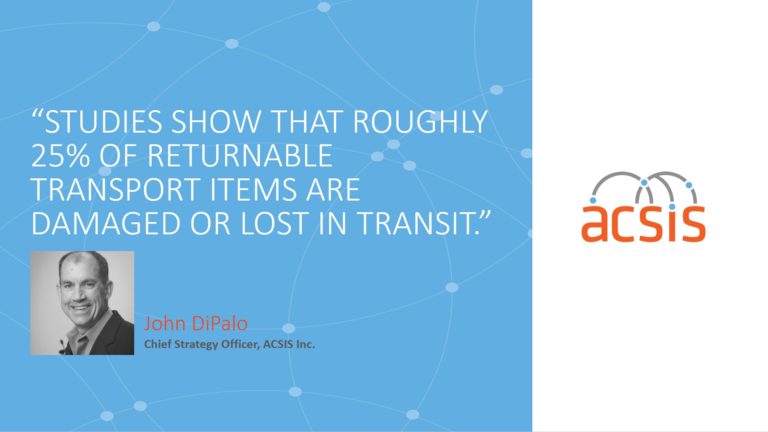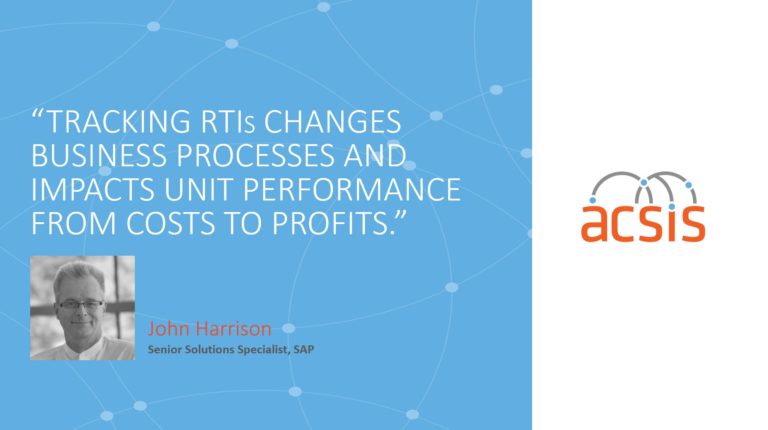Understanding the Impact of Tracking RTIs on Your Bottom Line
Today we hosted our webinar on Returnable Transport Items, and we’re truly blown away by the response. The amount of participants that wanted to learn more about this topic, the interactions with our speakers, the conclusions drawn, and the experience as a whole was more than we expected. We’d like to take this opportunity to thank our speakers: ACSIS Chief Strategy Officer John DiPalo, as well as SAP Senior Solutions Specialist John Harrison. They gave us the opportunity to have an incredibly useful conversation, and provided some great takeaways for all that attended. If you didn’t get a chance to join our webinar live, you can listen to the replay here.
The Truth About RTIs
One of the reasons why we are so focused on raising awareness and ensuring our clients and prospects understand how to better manage their RTIs, is because we’ve seen time and time again that these supplies are constantly damaged or lost, needing to be replaced continuously and causing a huge gap in the revenue. The good news is, this has quite an easy fix: traceability. Through serialization, the management of these assets becomes much more agile, in that you can trace their whereabouts real-time, seriously reducing the amount that has to be replaced.

Change You Can See
The other component is: why would you continue to throw money down the drain when you can turn a cost into a profit? This point is one our prospects and clients don’t normally expect, because most businesses and c-level executives are used to expenses and gains being linear, not realizing the tremendous potential there is when you think outside the box and have a system that not only functions better, but completely transforms an expense into an investment. John Harrison said it best –

If you ship in special containers e.g. totes, canisters, cylinders, etc. that either belong to the supplier or the customer, the management and traceability of RTIs is key. This is especially true for companies in the specialty chemicals industry, as well as pharma. They can use top optimization for keeping inventory of finished goods being transported.
Ethics and RTIs
One last component to RTI that we did not touch on during the webinar but can heavily impact your bottom line, is that lately consumers are becoming more and more aware of where the products they purchase come from. It’s not just the finished product, but also the parts. Those with a high expectation of ethics from companies are willing to go as far as requesting information of ethically sourced parts and products. If unsatisfied with the result, they will boycott companies who can’t provide sources or show that they were obtained from places with unethical practices like child labor. This was explored by The Harvard Business Review as far back as 2010, and it’s gaining more relevance today. When information like this goes viral, it can be hugely impactful for a company’s revenue and stock value, sometimes for a long period of time. This is yet another reason why traceability and RTIs should be prioritized.
For those of you on LinkedIn and Twitter, we also live-tweeted the webinar and will continue to post new and exciting strategy tidbits, industry news, and more opportunities to get to know more about our offering, like on today’s webinar. Follow us!
If you have any questions or comments about how your company can benefit from RTI traceability, please write them in the comments below and we’ll have our experts answer you.
